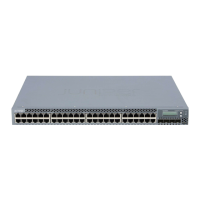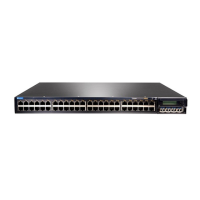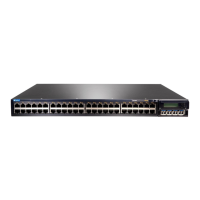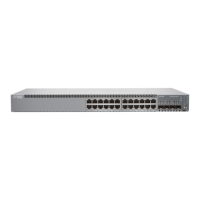To connect a fiber-optic cable to an optical transceiver installed in a switch:
WARNING: Do not look directly into a fiber-optic transceiver or into the ends
of fiber-optic cables. Fiber-optic transceiversand fiber-optic cablesconnected
to transceivers emit laser light that can damage your eyes.
1. If the fiber-optic cable connector is covered with a rubber safety cap, remove the cap.
Save the cap.
2. Remove the rubber safety cap from the optical transceiver. Save the cap.
3. Insert the cable connector into the optical transceiver (see Figure 43 on page 114).
Figure 43: Connecting a Fiber-Optic Cable to an Optical Transceiver
Installed in a Switch
4. Secure the cables so that they are not supporting their own weight. Place excess cable
out of the way in a neatly coiled loop. Placing fasteners on a loop helps cables maintain
their shape.
CAUTION: Do not bend fiber-optic cables beyond their minimum bend
radius.An arc smallerthan a few inches in diameter can damagethe cables
and cause problems that are difficult to diagnose.
Do not let fiber-optic cables hang free from the connector. Do not allow
fastened loops of cables to dangle, which stresses the cables at the
fastening point.
Related
Documentation
• Disconnecting a Fiber-Optic Cable from a Switch on page 132
• Installing a Transceiver in an EX Series Switch on page 95
• Maintaining Fiber-Optic Cables in Switches on page 135
• Pluggable Transceivers Supported on EX Series Switches
• Installing a Transceiver in an OCX1100 Switch
• Pluggable Transceivers Supported on OCX1100 Switches
Copyright © 2015, Juniper Networks, Inc.114
Complete Hardware Guide for EX3300 Ethernet Switches
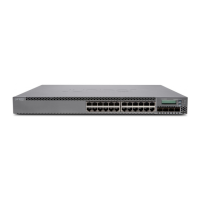
